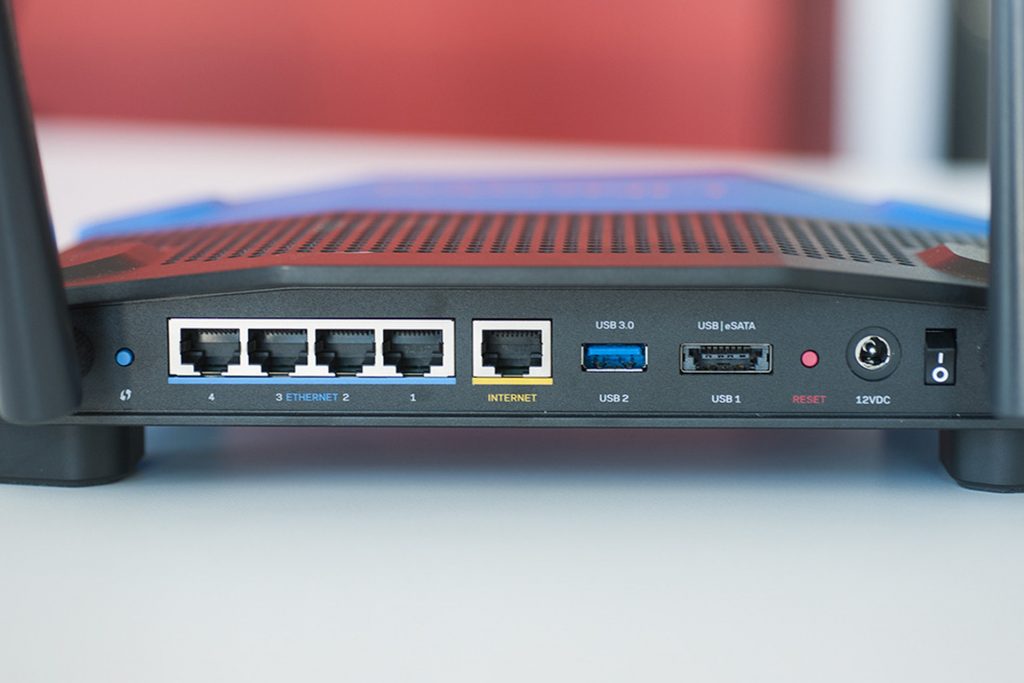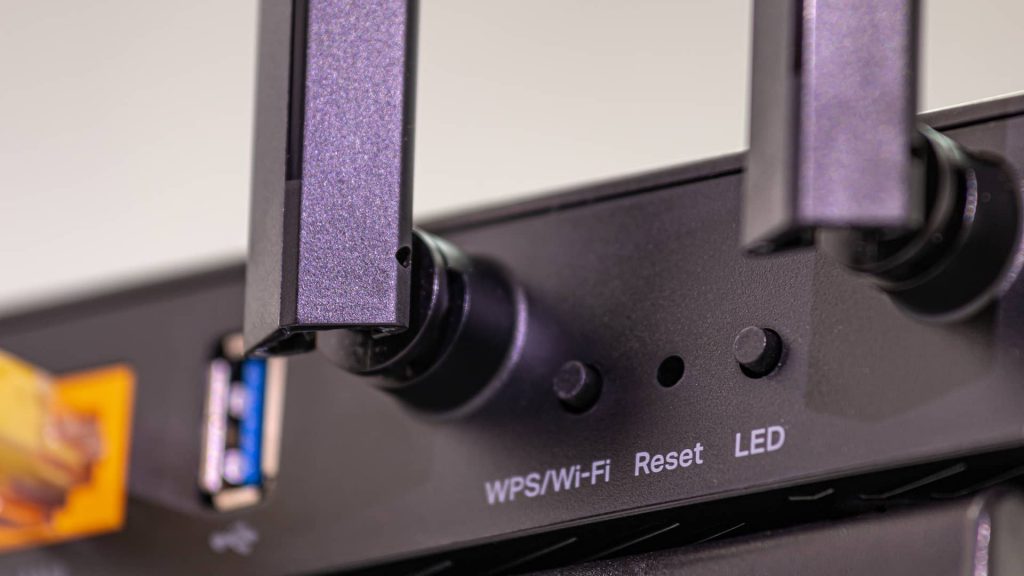If curiosity has gotten the better of you and you finally decided to find out what is WPS on a router and how it works, then you’re in the right place.
In the following section, we will explore what WPS is, what devices it integrates with, and whether or not it is a good choice for you, so stay with us and keep reading.

What Is WPS on a Router?
WPS is a feature implemented in many new and modern routers that allows for a quick and easy wireless connection between a device and the router without manually entering a password. It stands for “Wi-Fi Protected Setup,” and the connection is mainly established with a button press.
WPS was introduced in 2006 by Cisco as a means for home users with little to no knowledge of Wi-Fi security to be able to establish a home-use network. Let’s look at how WPS works, its benefits and drawbacks, and whether or not it’s a good choice for you.
How Does Wi-Fi Protected Setup (WPS) Work
Setting up and connecting devices to a router using WPS is very easy. Every router with a dedicated WPS button has this feature built-in, and with just one press of that button, the network becomes available and ready for devices to connect.
The connection process doesn’t require you to enter a password, yet the network is still password protected. That is because when the button is pressed, there is a small time window in which the network security is removed, enabling you to connect your device without a password.
Another way of connecting to a Wi-Fi network using WPS is by entering an eight-digit PIN code that the router automatically generates whenever the WPS button is pressed. This code is usually entered from within the WPS configuration utility.
Devices that support WPS
WPS is primarily incorporated and found in wireless routers. There is hardly any router today that doesn’t support this feature.
Besides routers, you can also find WPS in Wireless extenders and repeaters, which only require a press of a button to connect to another device to extend the range of a network. These devices are usually small and require no complicated setups; hence, implementing this feature is more than justified.
Wireless printers are also devices that support this feature as well, for quick network connection and easy setup. Smartphones, tablets, and even laptops can also have this feature, but instead of a physical button, they use dedicated software for easy connection to the network.
Read more: What Is Bridge Mode on a Router?

Advantages and Disadvantages of Using WPS
Now that you know what this feature is, let’s look at what WPS on a router is good for and its disadvantages.
Advantages
The first benefit of WPS is that it’s very easy and straightforward. With it, you don’t need to enter a long passphrase to access a network since you can do it with a button press. If both devices trying to connect have buttons, the process is even simpler.
Second, WPS is very user-friendly to people who lack the technical knowledge of Wi-Fi networking. In other words, even older people who don’t understand Wi-Fi can connect two devices with one button.
Using WPS is also a faster way to connect, as you will connect multiple devices in your home within seconds instead of separately entering the Wi-Fi passphrase for each device.
Since it’s already established technology, WPS is widely supported by many devices and popular operating systems like Android, Linux, and Windows.
Disadvantages
The biggest disadvantage of WPS is that it doesn’t promise high levels of network security. In other words, WPS-based networks are easier to hack into using brute force attack applications. This is one of the reasons why many people don’t use WPS and disable it entirely.
The WPS button can be accessed directly by others. This means that anyone who has access to your router, for example, a guest, can connect to your network with a press of a button.
Devices that use old network card hardware with WEP encryption will not be able to connect to a router using WPS. That is because WPS is based on the WPA-PSK encryption protocol, whereas WEP is an old and obsolete encryption method that precedes WPA.
Apple devices are also unable to connect to a router using WPS. Apple’s care for customer safety and security is widely known, and it has determined that WPS-based network connectivity is not a safe option, which is why iPhone, iPad, and Mac users will not be able to connect to a network through WPS.
Should You Use WPS?
WPS is an easy and convenient way to connect to a Wi-Fi network. Still, according to Stefan Viehlblock, the technology has a design and implementation flaw, making it susceptible to brute force attacks. You can read more about it at this link.
Knowing that, would you still decide to use WPS? If you’re a person that is concerned about online security and wants to feel assured that your network won’t be susceptible to unauthorized access, then completely disable WPS on your router.
On the other hand, if Wi-Fi security is not that important to you, as you live in a neighborhood where there is little chance that anyone will try to hack your network, WPS might be a great option. It will provide fast connectivity for all your devices, and you can even turn the WPS button functionality off after connecting all your devices.
Also read: What Is AP Mode on a Router?
Conclusion
WPS has become a standard over the years, which many people utilize, but even though it is convenient, it is still a weaker Wi-Fi encryption method than WPA2-PSK.
So what do you think? Are you going to implement it in your own home now that you know what is WPS on a router and how it can benefit you? Or will you go with the safer option of using a WPA2-PSK?
You should consider everything and make up your mind!